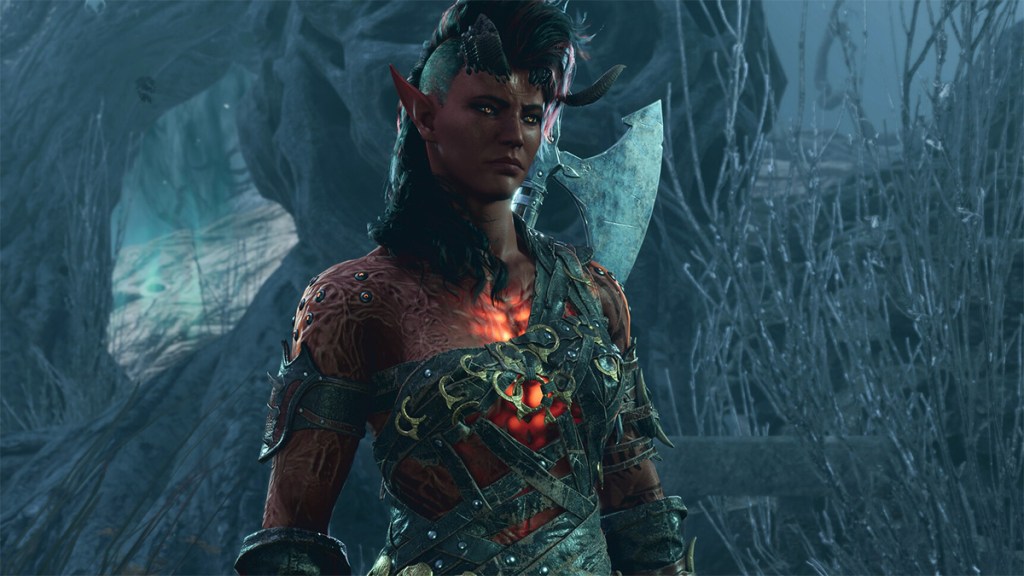Baldur’s Gate 3 can seem unintimidating, as, to the untrained eye, it just looks like a bunch of bars and stats and seems more akin to an interactive Excel spreadsheet. There’s a lot to learn and dive into, so here’s a Baldur’s Gate 3 beginner guide to help those starting out.
Here are some Baldur’s Gate 3 tips for new players
Save often
Baldur’s Gate 3 can be unpredictable. Encounters can go sideways rather quickly and a friendly conversation can turn hostile at a moment’s notice. So in order to combat that, it’s wise for players to manually save or quick save (which is mapped to F5) often. The game does automatically save, but those are never going to be as generous as a quick save or hard manual save.
Roll with decisions
On the other side of saving often in order to save scum, sometimes it’s better to just roll with it. Baldur’s Gate 3, like any true Dungeons and Dragons game, is all about embracing the unpredictability in order to make your own story. Trying to control every scenario can lead to mental burnout and take away from the fun. Good stories require conflict and Dungeons and Dragons has plenty of that, some of which requires some screw ups or bad luck now and again.
Turn off Karmic Dice
Dungeons and Dragons takes some luck to get through, but weighted dice can skew the results and have enemies hitting you harder and getting crits more often. Thankfully, there’s an option called Karmic Dice in the menu that tips the scales more in the player’s direction.



Rest often
There are two different types of rest options — long and short. Short rest can be triggered twice a day and restores 50% of your health and some class features (warlocks replenish their spell slots, for example). Long rest (which requires supplies) regains health, spell slots, and short rests. Using resources may dissuade players from long resting, but that can be quite damning during combat if some party members aren’t firing on all cylinders. Supplies aren’t particularly scarce, so there’s little need to hoard them.
It’s also important to revisit camp more often to not only long rest but to learn about your party, too. You can talk to them there, which is great for worldbuilding and building a bond with your companions. An exclamation point hovering over their head signals that they want to speak to you.
Build up your party early on
Baldur’s Gate 3 is a cooperative experience whether or not you’re playing with others. And thankfully, many of party members can be found near the starting area, including Shadowheart, Astarion, Wyll, and Karlach, just to name a few. Take your time and search around to get them on your team as soon as you can. This also applies to Withers, who mainly stays at camp and lets you revive a fallen party member, respec, and buy new allies.
Play your character
While it can be tempting to multiclass, it might be better for some newer players to pick a class and stick to it so they don’t spread themselves too thin. And, building off that, your character’s background is important since it can yield Inspiration when your actions are consistent with your background. This can lead to rerolling failed dice checks, which is handy. It’s a role-playing game, so it actually helps to role play.
The Alt key
This one is simple but the Alt key on PC (it remains to be seen what this will be on consoles) can highlight usable objects in a room. This is particularly helpful in darker areas.
Think creatively
Baldur’s Gate 3 gives players the means to make their own stories, and that translates to the mechanics, too. This can be as simple as using the environment to your advantage or taking the ground or throwing all the weapons lying around in a vase so the enemies can’t use them.
Spells can have creative uses out of combat that may lead to emergent reactions that you didn’t anticipate. For example, thrown potions can heal party members from a distance. Casting Web means players can jump down a high point safely. If you can think of it, try it.
Know the classes
Picking a class can be hectic, so it’s best to know the differences.
- Barbarians are good at close-quarters combat and have high strength, which is reflected in their Rage class action.
- Bards have high charisma and support spells that help debuff enemies. It’s not a tanky class, but can be good for those who want to be a solid support and communicator.
- Clerics are great magicians with good wisdom and dexterity and, thanks to their many subclasses, can pick from wide array of spells.
- Druids can shapeshift into animals, which opens up paths that humans can necessarily traverse. They can also innately speak to animals, which is useful. They’re decent healers and even have a separate health bar for their animal form.
- Fighters can fit a whole bunch of roles and are good aggressors, making them good for beginners.
- Monks are up-close brawlers that have a lot of variety but lack armor.
- Paladins are mixes between Fighters and Clerics and their three different oaths gives players variety in how they choose to fight.
- Rangers are, like their name implies, proficient at ranged combat, but can also use certain spells and multiple weapons.
- Rogues are stealthy and have high dexterity that lets them deal high sneak damage, making them good for those who like to tiptoe around.
- Sorcerers excel at magic, but don’t have as many magical options as wizards. However, their unique metamagic spells give them variety.
- Warlocks are like wizards but can’t cast as many spells. However, these spells can be recovered with a short rest (as was previously mentioned). They’re decent with melee weapons, too.
- Wizards have a ton of spells and variety with the spellcasting, but are very fragile.





